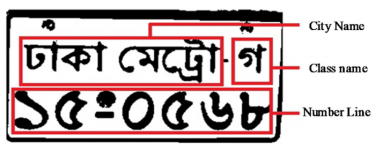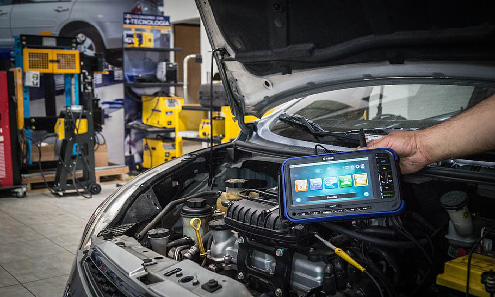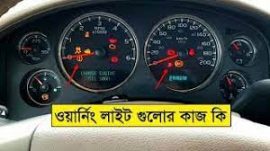DTC stands for “Diagnostic Trouble Code.” It is a standardized system used in the automotive industry to identify and communicate specific issues or faults within a vehicle’s various systems. When a vehicle’s onboard diagnostic system detects a problem, it generates a DTC, which is typically a numeric or alphanumeric code. These codes help mechanics and technicians diagnose and repair issues more efficiently.
DTCs are stored in the vehicle’s computer or Engine Control Module (ECM) and can be retrieved using a diagnostic tool or scanner. When a DTC is retrieved, it provides information about the nature of the problem, such as the system or component involved and the specific issue detected. This information assists technicians in diagnosing and fixing the problem effectively.
Different DTCs correspond to different issues, and there are several standardized code formats. The most common format is the OBD-II (On-Board Diagnostics, Version 2) system, which is used in most vehicles produced since the mid-1990s. These codes typically consist of a letter (indicating the system or subsystem) followed by a series of numbers.
DTCs are valuable tools for diagnosing and repairing vehicle issues, and they play a crucial role in modern automotive diagnostics.
A Diagnostic Trouble Code (DTC) is like a secret message that your car’s computer sends to mechanics when something is wrong. It’s a code that helps them figure out what’s broken or not working properly in your car. Each code tells them which part of the car is having trouble and what’s specifically wrong with it. Mechanics use these codes to fix the problem and keep your car running smoothly. So, when your car’s check engine light comes on, it means there’s a DTC ready for the mechanic to read and solve the issue.
How Do DTCs Work?
When your car’s computer detects a problem with any of its systems or components, it records a corresponding DTC in its memory. The DTC is store in the Engine Control Module (ECM) or the vehicle’s computer system. The next time you take your car to a mechanic or use a diagnostic tool, they can retrieve these codes to pinpoint the issue. DTCs help save time and effort in diagnosing problems, making the repair process more efficient.
Where Are DTCs Used?
DTCs are primarily use in the automotive industry, and they have become a standard method for diagnosing issues in vehicles. They are most commonly associate with the OBD-II (On-Board Diagnostics, Version 2) system, which is install in most vehicles produce since the mid-1990s. This system allows mechanics and technicians to access DTCs and understand what’s wrong with a car’s various systems, such as the engine, transmission, emissions, and more.
Common DTCs
The complete list of DTCs can be extensive, and they can vary depending on the make, model, and year of your vehicle. Here are some common DTCs and their general categories:
Engine and Emissions Codes:
Diagnostic trouble codes of car
P0100-P0104: Mass or Volume Air Flow Circuit Range/Performance Problems.
P0200-P0299: Fuel and Air Metering and Auxiliary Emission Control.
P0300-P0399: Ignition System or Misfire.
P0400-P0499: Auxiliary Emission Controls.
P0500-P0599: Vehicle Speed Controls and Idle Control System Issues.
P1100-P1199: Manifold Absolute Pressure, Barometric Pressure, or Mass Air Flow Circuit Problems.
P2000-P2099: NOx Adsorber Efficiency Below Threshold.
Transmission Codes:
Diagnostic trouble codes of car
P0700: Transmission Control System Malfunction.
P0715: Input/Turbine Speed Sensor Circuit Malfunction.
P0730: Incorrect Gear Ratio.
P0750-P0770: Shift Solenoid Malfunctions.
P0780-P0799: Shift/Timing Solenoid Malfunctions.
Brake System Codes:
Diagnostic trouble codes of car
C1214: Brake Booster Pressure Sensor Circuit.
C1233: Right Front Wheel Speed Sensor Circuit Open or Shorted.
C1241: Brake Fluid Pressure Sensor Circuit.
C1281: Brake Control Relay.
Hybrid System Codes:
P0A80: Hybrid Battery Pack Deterioration.
P0A7F: State of Charge Below Minimum Threshold.
P3000: High Voltage System Interlock Circuit Low Voltage.
C1310: HV System Malfunction (regenerative braking malfunction).
Airbag System Codes:
B0100-B0103: Front Impact Sensor Malfunctions.
B1000-B1999: Airbag System Circuit Failures.
ABS and Traction Control Codes:
C1214: Pump Motor Circuit Open.
C1233: Left Front Wheel Speed Sensor Input Signal Missing.
U0121: Lost Communication with Anti-Lock Brake System (ABS) Control Module.
Please note that this is not an exhaustive list, and there are many more DTCs for various systems within a vehicle. The specific DTCs and their meanings can vary depending on your vehicle’s make, model, and year. To diagnose and address issues accurately, it’s crucial to consult the vehicle’s service manual or have a qualified technician use a diagnostic scanner to retrieve and interpret the exact DTCs for your specific vehicle.
For any kind of Query or information Visit Our Feeds:
Facebook: https://www.facebook.com/carcarebd24
Youtube: https://www.youtube.com/c/CARCAREANDTECH




